Hello from Heather, ASD Garden Coordinator.
Our next meeting with our gardeners is on September 9th, and only the returners from last year will have harvested and dried garlic (as the 1st years weren’t here last November to receive seed garlic).
I am eager to speak with them, and will be calling folks this week. Not just about garlic, more program specific questions, but I must admit my eagerness to make these calls may or may not be largely based on finding out some garlic information.
Largely, the problem is this.
I distributed 8 different kinds of seed garlic last September. It was my first time ever ordering garlic, and I went a little crazy. Thinking it would be a great horticultural experiment to find out which ones did the best in our soil, tasted the best, and saved the best, I encouraged everyone to label each row and take notes on what they discovered.
What I’ve discovered so far kinda just pisses me off…I haven’t gotten to the fun tasting part yet. MAGGOTS.
Not all varieties were troubled. One variety was almost all rotted beyond use though–one if the Italian softnecks. Must consult my notes for more specifics. Rest assured my posts about garlic are just getting started.
The rot appears to start in the center of the head and work its way outward, so in many cases I could save most cloves.
What is bothering me is that when I harvested the garlic, all heads felt firm and I did not suspect any rot. Did the heads rot during the drying process, and then the rot attracted maggots?
BUT–if this IS the onion maggot, these flies lay eggs on bulbs during the growing season on HEALTHY plants, I believe, then when larvae hatch they bring about rot and spread it as they eat….but does that make sense?
Which comes first, the rot or the maggot?
Online, onion maggot is labeled as the most likely issue, but it could very well be some other kind of maggot. I have contacted my local extension office and hopefully will gain some clues. Online so far on various counties and state’s extension sites I can only find row cover as a solution to stop flies from landing in the first place to lay eggs. I am not entirely sure this is what happened though….any ideas?
A few garden bloggers commented that it appeared to happen during the curing process for them as well, and they noticed little holes in the bulbs…
Also, the problem could be the “lesser bulb fly”
What is strange though is that none of my onions were damaged at all. We had a beautiful crop, all year. Well enough about me. What’s going on in other gardens in the Grow Your Own family?
I visited Wanda’s garden today and her cucurbit powers are putting me to shame. Seriously, no fungus in sight. I’m in awe, and I’ll admit it, pretty jealous. She and her husband will be entering the largest pumpkin in the WA County Fair. Last year they won “prettiest pumpkin”.
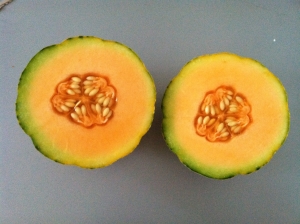
This was the only melon I had all year so far that did not rot away…it kinda just tasted like water despite looking pretty…I still haven’t gotten over it.
Also, we had a stranger in the garden today. I didn’t think slugs this large and patterned existed outside of the Pacific Northwest. Maybe I brought it back with me?
PLEASE! Please let me know if you have information on this maggot issue. Go well, stay well, garden well….


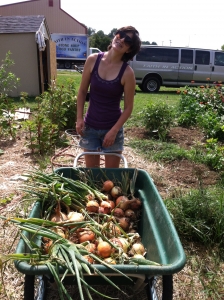
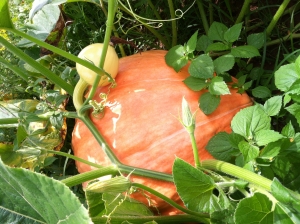
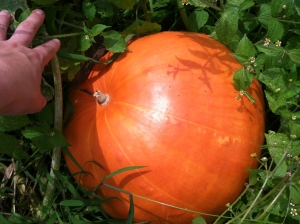
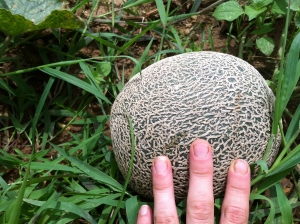

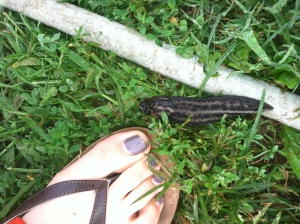

I had a problem with about half my softneck garlic which was harvested after several days of hard rain. I couldn’t wait to harvest any longer because it was already overdue. Who knew it would rain so much in June? Well most of the crop is ruined due to what you describe. I too am trying to figure out which came first the rot or the maggots. It seems that not all rotting heads have maggots so did I get the rot from improper storage?